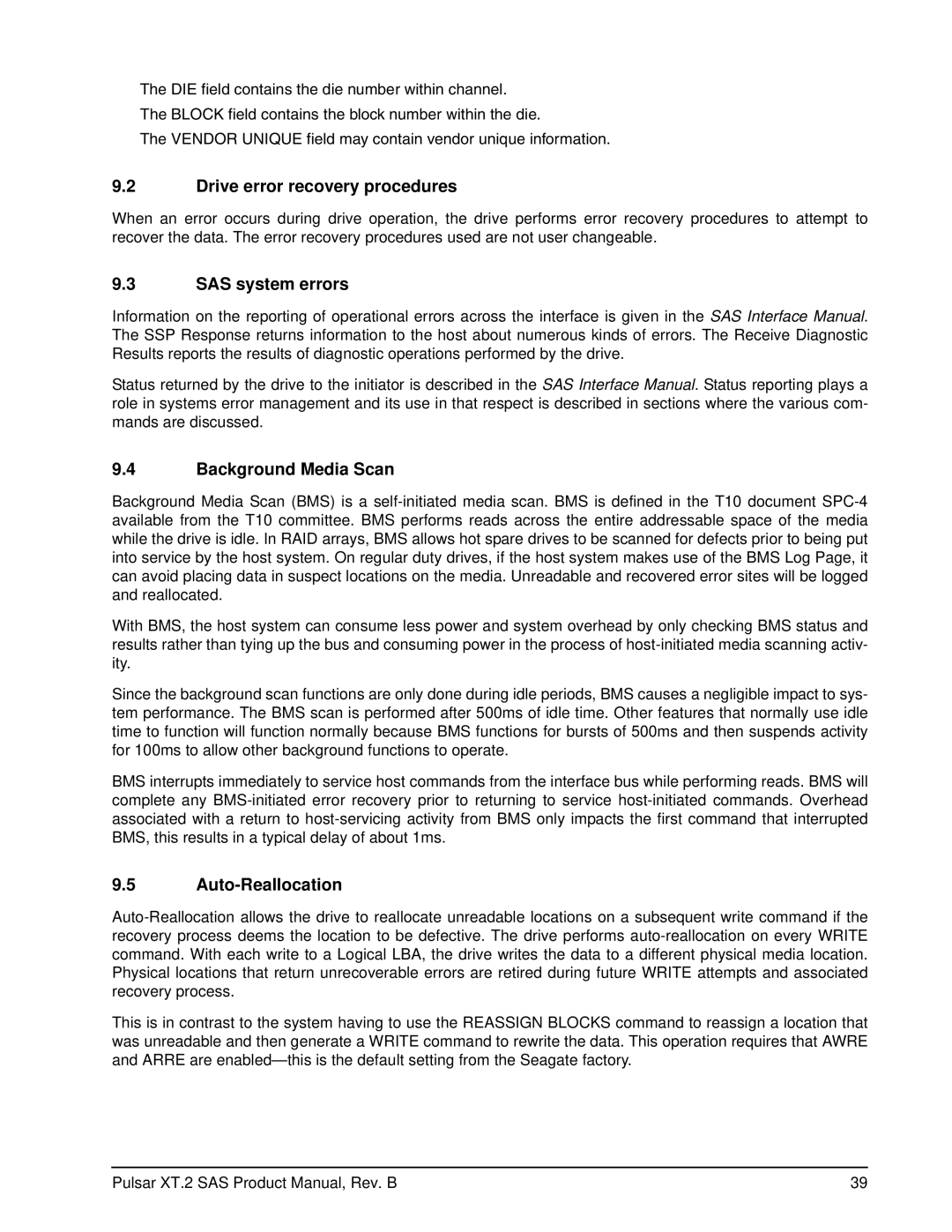The DIE field contains the die number within channel.
The BLOCK field contains the block number within the die.
The VENDOR UNIQUE field may contain vendor unique information.
9.2Drive error recovery procedures
When an error occurs during drive operation, the drive performs error recovery procedures to attempt to recover the data. The error recovery procedures used are not user changeable.
9.3SAS system errors
Information on the reporting of operational errors across the interface is given in the SAS Interface Manual. The SSP Response returns information to the host about numerous kinds of errors. The Receive Diagnostic Results reports the results of diagnostic operations performed by the drive.
Status returned by the drive to the initiator is described in the SAS Interface Manual. Status reporting plays a role in systems error management and its use in that respect is described in sections where the various com- mands are discussed.
9.4Background Media Scan
Background Media Scan (BMS) is a
With BMS, the host system can consume less power and system overhead by only checking BMS status and results rather than tying up the bus and consuming power in the process of
Since the background scan functions are only done during idle periods, BMS causes a negligible impact to sys- tem performance. The BMS scan is performed after 500ms of idle time. Other features that normally use idle time to function will function normally because BMS functions for bursts of 500ms and then suspends activity for 100ms to allow other background functions to operate.
BMS interrupts immediately to service host commands from the interface bus while performing reads. BMS will complete any
9.5Auto-Reallocation
This is in contrast to the system having to use the REASSIGN BLOCKS command to reassign a location that was unreadable and then generate a WRITE command to rewrite the data. This operation requires that AWRE and ARRE are
Pulsar XT.2 SAS Product Manual, Rev. B | 39 |
